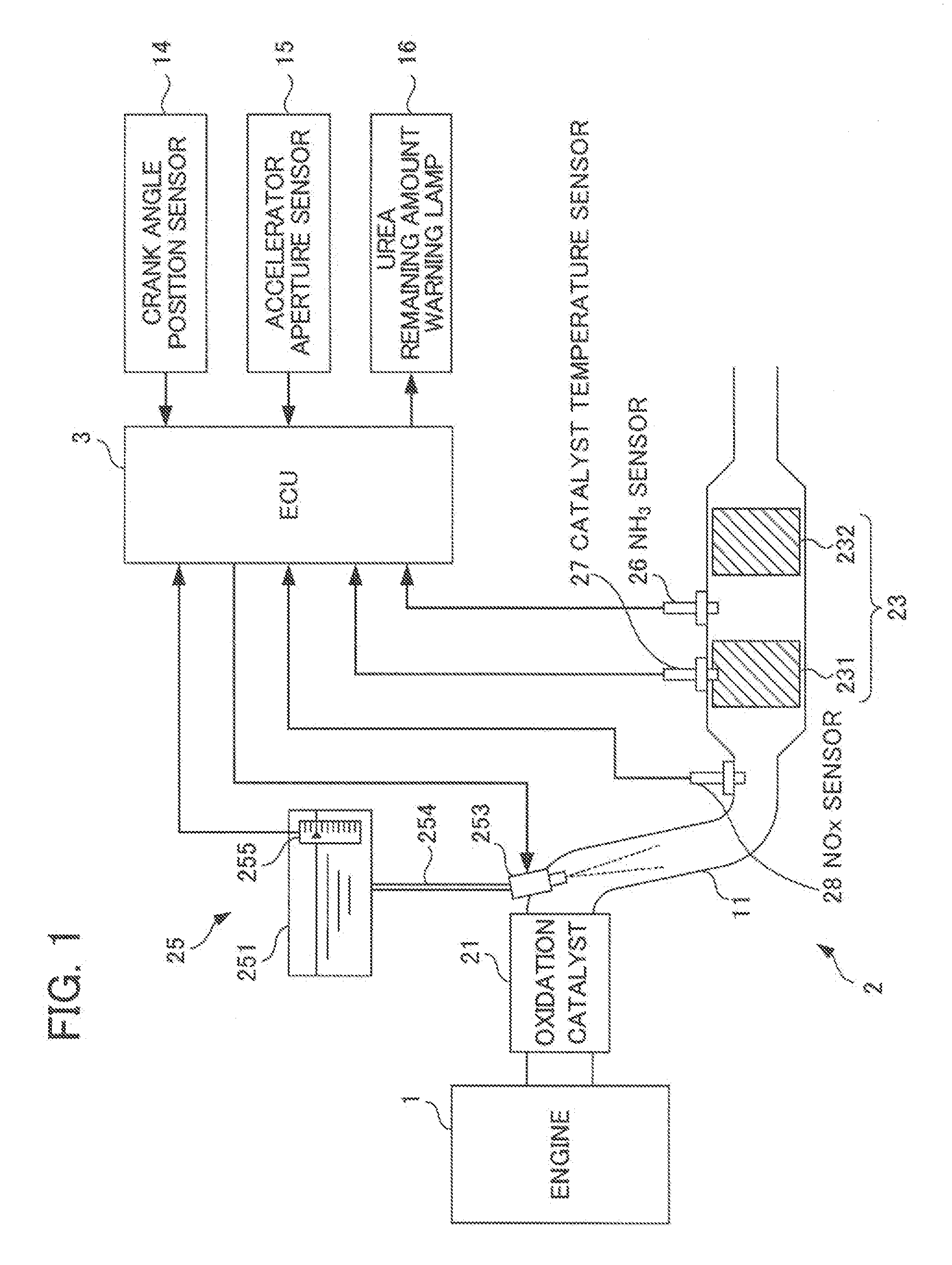Exhaust purification apparatus for internal combustion engine
a technology for purifying apparatus and internal combustion engine, which is applied in mechanical apparatus, machine/engine, electric control of exhaust treatment, etc., can solve the problems of difficult to always optimally control the injection amount of reducing agent, variable purification performance between individual units, etc., and achieves suppressing ammonia, and high nox reduction rate
- Summary
- Abstract
- Description
- Claims
- Application Information
AI Technical Summary
Benefits of technology
Problems solved by technology
Method used
Image
Examples
Embodiment Construction
sor for the conventional exhaust purification apparatus.
EXPLANATION OF REFERENCE NUMERALS
[0079]1 engine (internal combustion engine)[0080]11 exhaust channel (exhaust channel)[0081]2 exhaust purification apparatus[0082]23 urea selective reduction catalyst (selective reduction catalyst)[0083]231 first selective reduction catalyst[0084]232 second selective reduction catalyst[0085]25 urea injection device (reducing agent supply means)[0086]26 ammonia sensor (ammonia concentration detection means)[0087]28 NOx sensor[0088]3 electronic control unit (first control input calculation means, second control input calculation means, third control input calculation means, reducing agent supply amount determination means, target ammonia concentration setting means)[0089]4 feed-back controller (first control input calculation means, target ammonia concentration setting means)[0090]41 target ammonia concentration setting portion (target ammonia concentration setting means)[0091]42 sliding-mode contr...
PUM
 Login to View More
Login to View More Abstract
Description
Claims
Application Information
 Login to View More
Login to View More - R&D
- Intellectual Property
- Life Sciences
- Materials
- Tech Scout
- Unparalleled Data Quality
- Higher Quality Content
- 60% Fewer Hallucinations
Browse by: Latest US Patents, China's latest patents, Technical Efficacy Thesaurus, Application Domain, Technology Topic, Popular Technical Reports.
© 2025 PatSnap. All rights reserved.Legal|Privacy policy|Modern Slavery Act Transparency Statement|Sitemap|About US| Contact US: help@patsnap.com



